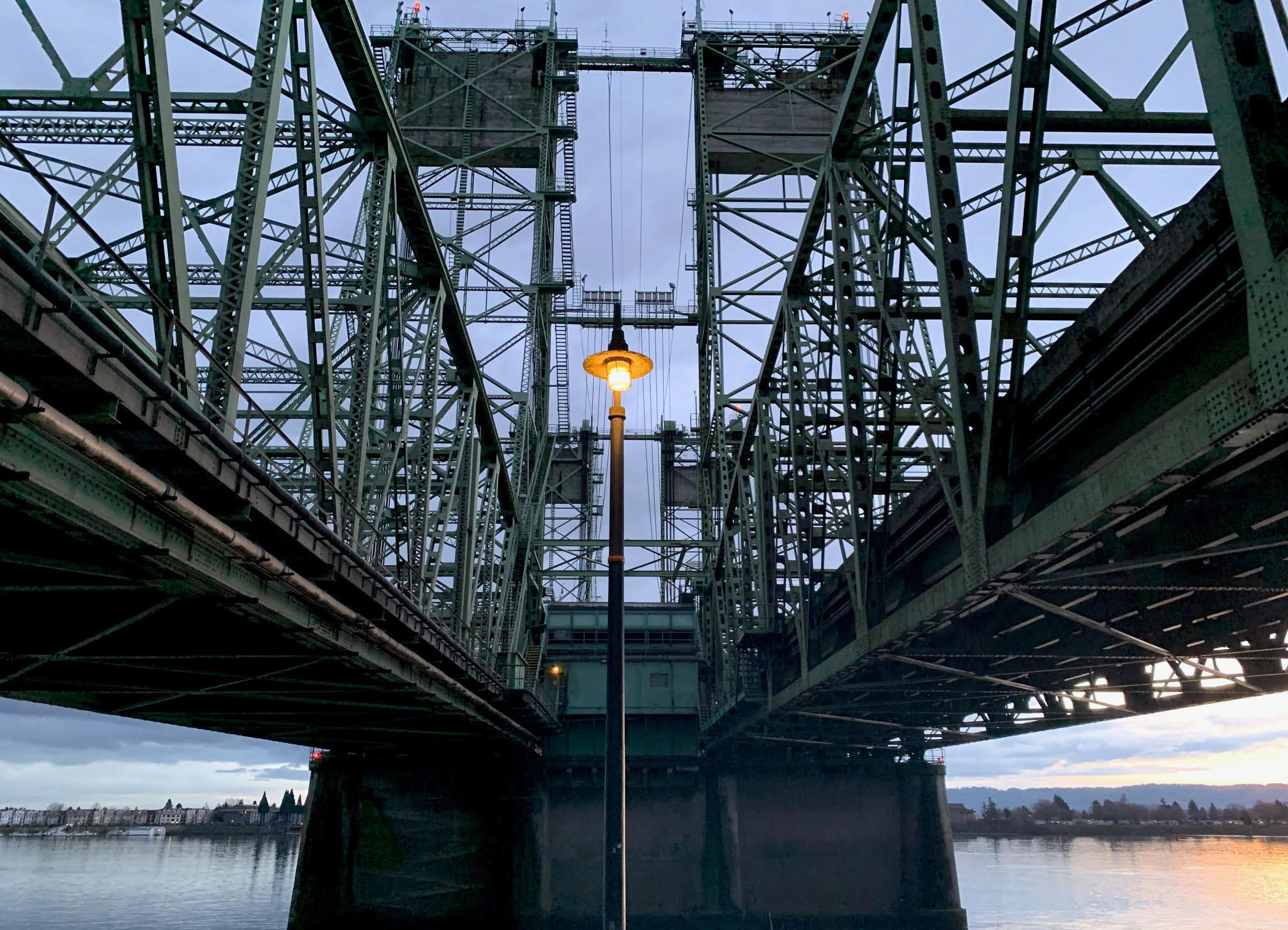
The Interstate Bridge in downtown Vancouver on March 3, 2025. Southwest Washington officials are debating funding for light rail on a replacement of the bridge between Oregon and Washington.
Erik Neumann / OPB
For the past several weeks, city councils across Southwest Washington have been debating the subtleties of a single paragraph in their agreement about the planned replacement of the Interstate Bridge between Oregon and Washington.
This latest argument over the decades-long, multibillion dollar megaproject boils down to whether Clark County municipalities like Battle Ground, Camas and Washougal are willing to chip in to fund light rail on a new bridge, and if their refusal to do so could create a bigger wedge in the project.
On March 11, members of the Clark County transit agency, C-TRAN, are expected to vote on whether to change their conditions in a key bridge planning document that was originally approved in 2022, according to Eric Florip with the agency.
The 10-member board is made up of representatives from the Southwest Washington cities where C-TRAN operates bus service. It could vote to remove language that says local municipalities “may” help pay for the long-term operations and maintenance costs of light rail in Vancouver.
Some worry that cities refusing to contribute to light rail costs could cause a chain reaction, leading to a bigger breakdown in the bridge plan, and possibly delaying construction or jeopardizing billions in public funding.
Related: Oregon considers selling 65 acres of Hayden Island for ODOT conservation
If the C-TRAN board chooses to change their agreement about bridge funding, it opens the possibility for it to rescind approval of one of the main plans guiding the bridge project.
“That gives me pause,” Battle Ground Mayor Troy McCoy said during a Monday city council meeting.
Referred to by McCoy as the “poison pill that stops the bridge,” he said a transit agency walking back its approval could delay bridge planners by years since they would have to rework complicated environmental impact statements.
Representatives from the Interstate Bridge Replacement Program and Portland Metro declined to comment.
Replacing the I-5 bridge over the Columbia River has long been a contentious proposal. The previous plan, known as the Columbia River Crossing, fell apart in 2014 when Washington state lawmakers declined to authorize funds for its construction over some of the same concerns as today: light rail and tolling.
“Light rail, the feds could stop it, a funding mechanism could stop it, there’s a lot of things could stop it. But the question is: do you want that language to stop it?” McCoy asked the Battle Ground councilors.
“Is this where you want the fight?”
Related: Oregon, Washington enter uncertain moment for I-5 bridge project as Trump takes office
Similar meetings have been held in Washougal, La Center and Camas, the community where council members are perhaps most opposed to paying for light rail.
On Feb. 3, Camas city officials unanimously passed a resolution stating that the city opposes “the Light Rail extension as part of the I-5 Interstate Bridge Replacement project and urges this component to be removed in its entirety.”
One local transit agency changing its priorities on the bridge would not be significant enough to disrupt the overall project, according to Oregon Rep. Susan McLain, a Democrat from Forest Grove who serves as co-chair of the legislature’s I-5 Interstate Bridge Committee.
“Some conditions changing in one aspect of one portion of a leadership or community is not going to waylay a project that has been committed to by two states, the federal government and has two legislatures working on it as hard as they can,” McLain said.
She said that C-TRAN changing its conditions would create more discussions about how to pay for the project.
Multiple federal funding sources for the bridge replacement rely on mass transit being included.
In late 2023, the bridge replacement received a $600 million federal “mega grant” that emphasizes multimodal transportation. Planners are in the process of applying for a $1 billion Capital Investment Grant from the Federal Transit Administration. Funded by the Bipartisan Infrastructure Law, the grant pays for “fixed guideway investments” like commuter rail, light rail and bus rapid transit.
Southwest Washington’s share of light rail ongoing operating costs are estimated to be around $6.8 million per year, according to C-TRAN records.
Related: Interstate Bridge report offers more insight on tolls, construction, travel times
C-TRAN is funded by cities around Clark County through sales taxes. The maximum possible tax increase for future light rail costs is 0.2%. That means purchasers could be asked to pay an additional two cents per $10 spent.
However, if the C-TRAN board changed their conditions about paying for light rail, there could still be other tax funding options, according to Florip.
“One of those options does allow for the creation of a subdistrict, for example where a smaller geographic area within our service area — say the city of Vancouver or other variations — could pay that tax rather than the entirety of our service area,” he said.



